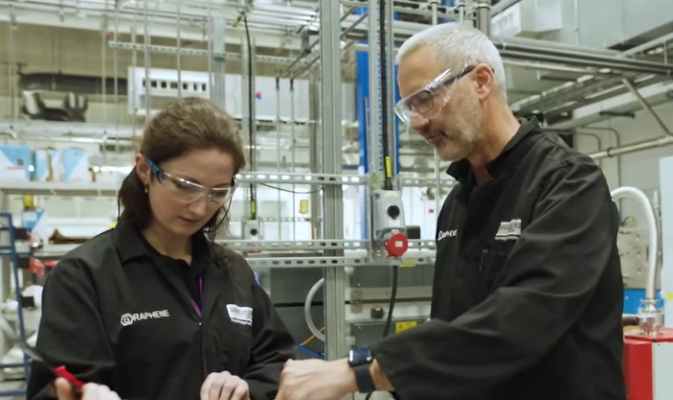150+ ‘graphenes’ at your disposal: today, it’s the application that decides the material.
Thought leadership 13th December 2023

Originally posted by James Baker on LinkedIn
The isolation of graphene in 2004 was a seminal breakthrough. Pioneers Sir Andre Geim and Sir Konstantin Novoselov sparked a global science revolution – a continued journey of discovery producing a range of breakthrough applications – from graphene-enhanced concrete that reduces CO₂, to a revolutionary hydrogel for vertical farming, and a process to extract lithium from water for use in the battery-making industry.
‘Graphenes’, a family of 150+ 2D advanced materials
Now, after nearly twenty years of leading research into graphene and 2D materials – the family of single-layered materials which I like to call ‘graphenes’ – we know a great deal more about the potential of these special materials. And chief among those lessons is that materials research is best driven by establishing and working towards a range of intended real-world applications. Or, to put it another way, now that we know intricately the characteristics and properties of more than 150 other 2D materials, we have the capability to focus on identifying the right materials for the right applications.
‘Graphenes’ are not magic dust – they cannot just be sprinkled into a product to transform it. No one material works for every scenario, but every graphene, with the right treatment, can work for an application. We know certain graphenes work in batteries, others work in polymers – it’s not just about the material, but how you formulate it. One size, in graphene, does not fit all.
Harnessing the right properties for your needs
There are also many different forms of ‘graphenes’, as we know so much more about how to make it, mix it, and formulate it. We understand the different characteristics of graphenes; their numbers of layers, flake sizes, and functionalisation, and can match that science to a range of potential applications. Graphene use is now affordable and viable and can help to transform whole systems for the better. In the last five years we’ve supported more than fifty spin outs, and launched many new technologies, products, and applications in partnerships with industry. And we’ve been able to innovate at an increased pace, using the knowledge we’ve gained from our work with the original graphene and applying that to a whole family of 2D materials.
Indeed, the pace of innovation in the world of 2D materials and heterostructures is beginning to outpace our original learnings from graphene. There are over 150 advanced materials with incredible properties, and we’re applying the same philosophy with which we approach graphene, to materials like MXenes – looking to scale with it and use it in industrial processes. We’ve also built an exciting partnership with the National Physical Laboratory (NPL) , working together on the metrology and quality control of both graphene and other 2D materials.
Industry-first approach
At Manchester, our focus is on the industrial processes that can optimise the way we work with graphenes, and we partner with existing and future graphene suppliers to find solutions. We talk to companies who haven’t yet benefited from graphene, about what they’re trying to achieve, and how we can find the right material(s) for that purpose. At the Graphene Engineering Innovation Centre, we’re focussed on these industry challenges, and the resulting industry manufacturing processes – accelerating lab to market development. Their ambitions drive our work, making us truly academic led, but industry fed.
Feel free to drop me a line via LinkedIn to talk about how to make graphene work best for you.
Discover the latest cutting-edge insights on graphene and 2D materials. Visit our Thought Leadership blog section to find out more.

